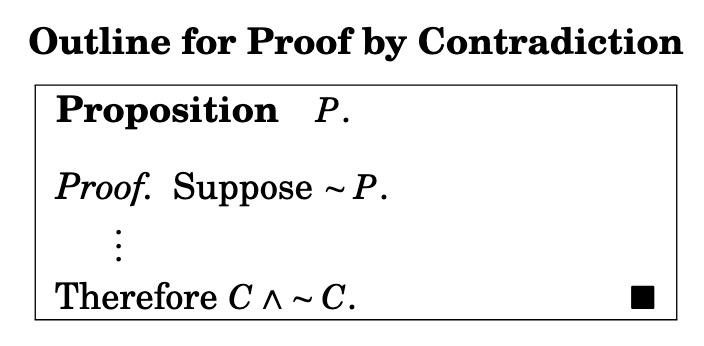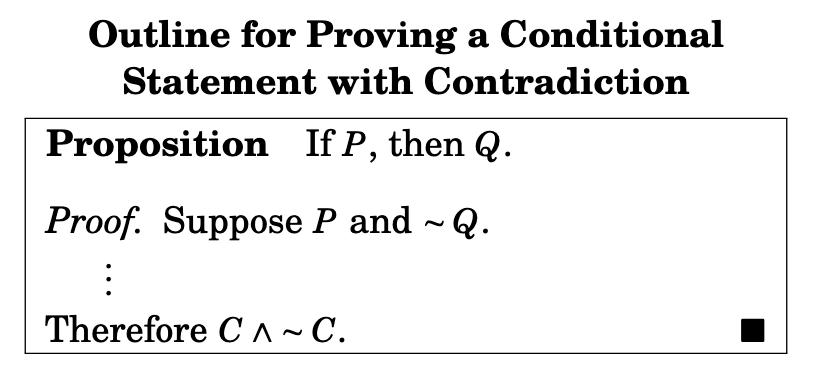
This method of proof is not limited to proving conditional statements. To prove that \(P\) is true by contradiction, we show that if we assume \(P\) is false, then nothing makes sense. In symbols, we’re taking advantage of the following equivalence:
\(P \equiv (\neg P \Rightarrow (C \land \neg C)\)
Here’s a truth table showing the above equivalence; notice that the bolded columns match:
| \(P\) | \(\neg P\) | \(C \land \neg C\) | \(\neg P \Rightarrow C \land \neg C\) |
|---|---|---|---|
| T | F | F | T |
| F | T | F | F |

Definition/reminder: A real number \(x\) is rational if \(x = \frac{a}{b}\) for some integers \(a, b\). A number that is not rational is irrational.
Example:
Proposition: The number \(\sqrt{2}\) is irrational.
Proof: Suppose that \(\sqrt{2}\) is rational. Then \(\sqrt{2} = \frac{a}{b}\) for some integers \(a, b\).
See the book’s proof of this proposition in Ch 6.1, page 139), which concludes that \(b\) is both even and odd, a contradiction.
There’s very little new here, except to recall how to negate a conditional expression, using the following equivalence: \[ P \Rightarrow Q \equiv \neg P \lor Q \] To contradict \(P \Rightarrow Q\), we suppose \(\neg (P \Rightarrow Q)\), or equivalently, negating the right hand side we get \(P \land \neg Q\). Plug this into the above template, and you get:

Example:
Proposition: If \(a, b \in \mathbb{Z}\) and \(a \ge 2\), then \(a \not\mid b\) or \(a \not\mid (b + 1)\).
Proof: See proof in BoP 6.2, p 142